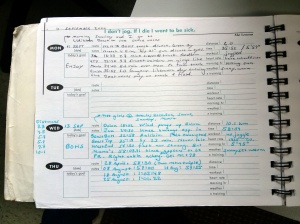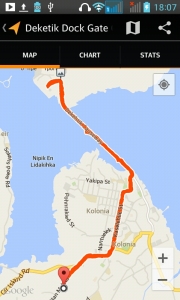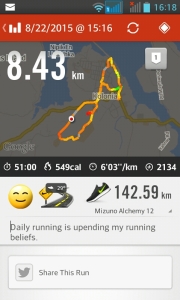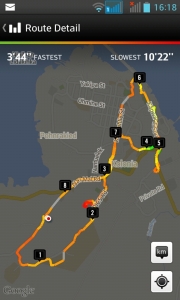A friend posted a screenshot of a fitness app I had not yet seen. Indulging my shiny object fascination of the moment, running and fitness apps, I had a look at the capabilities of the app. The app appears to be a good fit to what he is trying to do.
Some veteran runners like to keep running logs, track their running over the years. I ran for years without intentionally logging my runs. In 1998 Runner’s World sent a free running log, and I began to use the log to record fitness activities including running. I began to have data I wanted to retain. Data that has to be stored and conserved.

Some thirty-five years ago I had an Atari 800 computer. The simple programs I wrote had to be stored on a audio cassette tape. During that same era the 5.25 inch floppy disk provided removable storage for the Apple II computer. Within a few short years the 3.25 inch floppy disk would supersede the 5.25 inch floppy disk. This past week the last computer with a 3.25 inch floppy disk drive was retired from the division in which I work. I still have data on 3.25 inch floppy disks, but that data will never again be accessible.

In 1996 I created a web site in CompuServe. In 1998 the FSM lost the dial-up connectivity to CompuServe and switched on direct connectivity to the Internet. I had to recover the orphaned data from a hard drive mirroring my on line site, moving the data to GeoCities. Within three years I was again moving that data to college servers.

Over the years I have learned that with changes in technology come orphaned, abandoned, and sometimes unrecoverable data. Today data is often stored in cloud services, which is almost more vulnerable to sudden change than hardware based technology. A storage provider may suddenly decide to depart the storage market (Ubuntu One) or start charging fees for what was once free storage (Amazon Cloud Drive).

If the data is in a proprietary format, the loss of a software package may make the data unrecoverable.
When I first acquired a GPS enabled Android smart phone in late 2014, I looked for an app that could provide time, distance, and mapping capabilities for my running. Thirty years of rescuing and moving data is always on my mind when I make a data storage choice. I always want to know how a company plans to stay in business. If there is no clear way for the company to benefit from me or my data, then that is not a secure data storage choice. And the company should be big enough to fend off being acquired and taken apart by a competitor.

I opted for Google MyTracks reasoning that Google might just be big enough to not fail anytime soon. Google thrives on user data, MyTracks provides more information about me (where I am and where I tend to go) that has potential marketing value.

MyTracks provided only basic total time, distance, speed, and mapping capability.

During the summer of 2015 I became aware of a running app option that was functional in Micronesia, an option I had not seen in 2014. Although two of the market leaders, Runtastic and Runkeeper, are not available in the Google Play app store in Micronesia, Nike+ running was available. Runtastic and Runkeeper have a two tiered business model. The lower tier appears to be a lite version for free, possibly with advertising, and a paid subscription model with more features. Nike+ running is free – all features -and apparently an outgrowth of their abandoned fitness FuelBand.

Nike+ running provided data on splits, personal bests, and nice touches such as tracking total kilometers per shoe. All of the data a runner might want to access. Yet what of tomorrow? Nike has a business model that may be more sustainable than a small operation supporting a dedicated running app. Nike as a company certainly has the size and resources to survive. Yet the app is peripheral to their core business and could be shed like the FuelBand product. Whither one’s running data then? Where Google MyTracks could upload KMZ files to Google Drive, Nike+ has no clear path to data export nor extraction.
A dedicated app housed in a small independent software developer is equally insecure over the long haul. A company the size of a Nike or Google could buy the app or acquire the development team to enhance their own fitness apps should they choose to do so. Data may remain trapped in a proprietary format on cloud servers, inaccessible when the app no longer exists. A veritable 3.25 inch floppy disk of the modern era: without the drive the data is effectively lost. Without the app, the data generated by the app is lost.
Paper is not a particularly secure data storage option, but keeping a log in a notebook remains a viable option. I continue to echo run information into locally available composition notebook. That is the only way I have of knowing where my running data will be tomorrow. Where is your data sleeping tonight and will it be accessible tomorrow?
Great post! Check out my blog n follow too if you could! http://78milesandcounting.wordpress.com